Guitarist Dave Kilminster Recounts His Nightmare Audition for Roger Waters
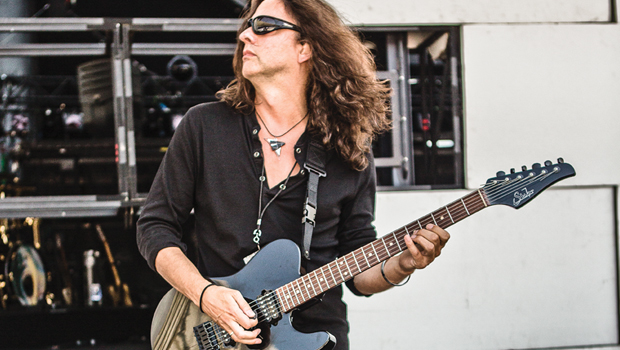
Dave “Killer” Kilminster is a British guitarist who used to write and transcribe music for publications like Guitarist and Guitar Techniques.
Kilminster has toured extensively with Keith Emerson, and was first recruited by Waters to cover original Pink Floyd guitarist David Gilmour’s lead parts on the 2006 Dark Side of the Moon tour.
Kilminster is also one of the four guitarists tapped by Roger Waters to perform on The Wall Live tour. We caught up with him on July 28, 2013, when the tour hit the Stadio Olimpico in Rome, Italy. In the following excerpt from our current cover story, Kilminster sheds some light on what it’s like to play in the greatest show on earth.
GUITAR WORLD: You’ve been touring The Wall Live for the last three years. How do you keep the performance fresh?
Well we’ve done this show almost 200 times now. And to keep it fresh, I just try to play it better every night. The improvements are obviously very subtle; it’s probably only me that would notice. It might be a particular vibrato on one note or a particular timing or phrasing thing. I think my amp sounded a little tired last night, so I talked to my tech, I said, “I wonder if we should re-valve this?” And he said, “Yeah well, we haven’t done it for a few years.” And I’m thinking, “How long?” We’ve been cranking these things for ages!
Let’s talk a bit about your history. You have some experience writing for guitar magazines…
Get The Pick Newsletter
All the latest guitar news, interviews, lessons, reviews, deals and more, direct to your inbox!
Yeah, I used to write for Guitarist and Guitar Techniques. I did over 200 articles for them, transcribing and recording some of the scariest guitar pieces you can imagine. I ended up doing things like “Black Star” by Yngwie Malmsteen, [Van Halen’s] “Eruption” and “Spanish Fly,” and “For the Love of God” by Steve Vai.
How did you get hooked up with Roger Waters? I know you first played with him on his 2006 Dark Side of the Moon tour.
It was a life-changing thing. I was playing in Keith Emerson’s band at the time. One day my manager came into the studio where I was recording an album. He said, “I just had a phone call from [Waters touring guitarist] Snowy White, and he said Roger Waters is looking for a guitarist.” I was like, who is that? I had no idea, not a clue. [laughs] When he finally managed to calm himself he told me he was in Pink Floyd and he told me the dates that they wanted somebody for. And originally it was going to be something like 10 weeks. But I was already to tour with Keith during that time, so I couldn’t even think about it. And that was it. I didn’t think anything more of it for a day or so. And then I had an email from Keith’s manager, saying, “I’m really sorry, I have to pull our dates” And I thought, “That’s a sign!” That’s a really obvious sign that you need to go for this. I still didn’t think I’d get it because I thought it was sort of an impossible thing.
What was your audition like?
It was terrible, absolutely terrible. [laughs] I felt like I was prepared. But not being a fan, I was not really aware of what exactly I was supposed to do. For example, Roger said, “Let’s do ‘Money’. ” I said, “Great, which guitar part do you want me to do?” I’ve got them all worked out. There’s three rhythm guitar parts on the record, I know all the solos and I’m thinking it’s going to be great. Until Roger said, “Are you alright on the lyrics?” And I’m thinking, “Shit! I’m supposed to sing this as well?” It’s not difficult, but it’s slightly syncopated along with the rhythm. And I’m singing over that, reading the lyrics, thinking that I’m not entirely sure because I’d never even thought about doing this before. I was completely green.
It sounds like a nightmare audition.
Oh, and I seem to remember that I had two guitars as well…and I strapped on the wrong guitar for that piece! [laughs] The solo for “Money” goes up to the 22nd fret and I had my 21 fret guitar on at the time. And then we started doing “Wish You Were Here” and I plugged in the acoustic, and it wasn’t working. Then we got halfway through and it comes to the bottleneck solo and I think, Shit! Where’s the bottleneck? “It’s in my bag, sorry, can we just stop and…” [laughs] I drove away from that audition thinking, You’ve just blown the biggest gig of your life! I was kicking myself all the way home.
And then I had a friend call the next morning from management saying “Yeah!” And I’m like, “Have you got the right number?” [laughs] But the weirdest thing is, about a day after I heard that they wanted me for this 10-week tour, which actually turned out to be two years, I got another email from Keith’s manager, “Oh don’t worry, we’ve got the American dates back.” Fate just opened this tiny little door just for a few days and it changed my life completely. To think that I could have missed out on these last seven years.
As you’ve mentioned, you’ve tackled transcribing some crazy guitar music. Was part of the challenge of this material nailing the nuances?
Yeah. The vibrato is more important, the effects you’re using are important. I’d never really bothered with effects all that much. I think the first time I used delay on a solo was when we started on the Dark Side tour. I just never bothered. In fact, I heard Shawn Lane playing a delay once and I thought, “What is the point? There’s no room, you can’t hear anything!”
The tone on those classic Gilmour parts is so distinct. Did you change your setup for this gig?
Yes, I did. I think I was working toward that kind of sound anyway, where I just feel very comfortable with a Tele body but actually having three pickups and the tremolo so you kind of get all that Strat noise as well. The Suhr Rose guitar I used last night is my main one.
What amps are you using?
The main problem for me for this gig was trying to find an amp that would cover the clean parts and also the overdrive parts. And I didn’t actually think it was possible. I had this vision of going the way of Eric Johnson having different amp setups: solo amp, rhythm amp and clean amp. And then I came across Brunetti, which have amazing, clean sounds and amazing overdrive.
Photo: Sean Evans
For more from Dave Kilminster, plus our exclusive interview with Roger Waters and more — including Black Oak Arkansas, the Winery Dogs, Marty Friedman, a guide to the most incredible concerts and roadshows in rock and metal history, a holiday gift guide and John Petrucci's monthly column — check out the Holiday 2013 issue at the Guitar World Online Store.
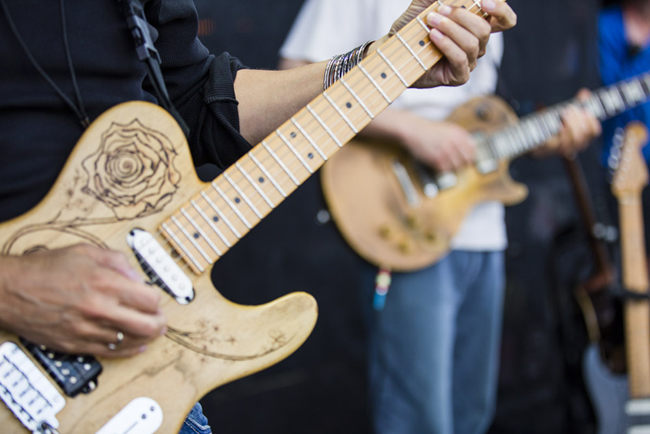
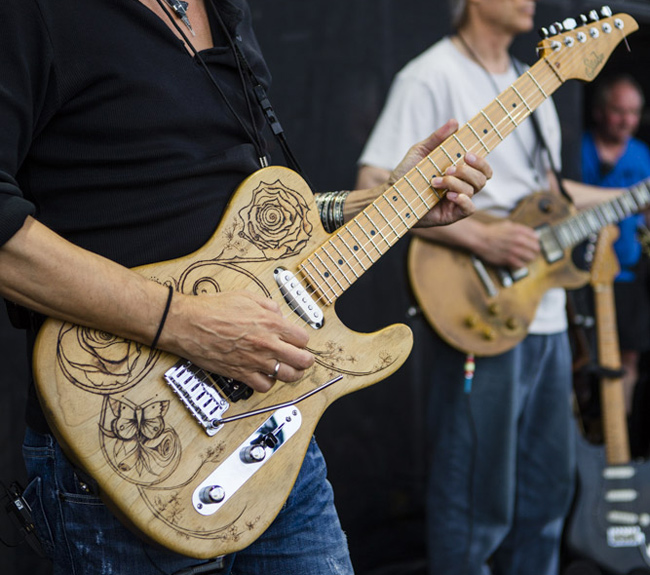
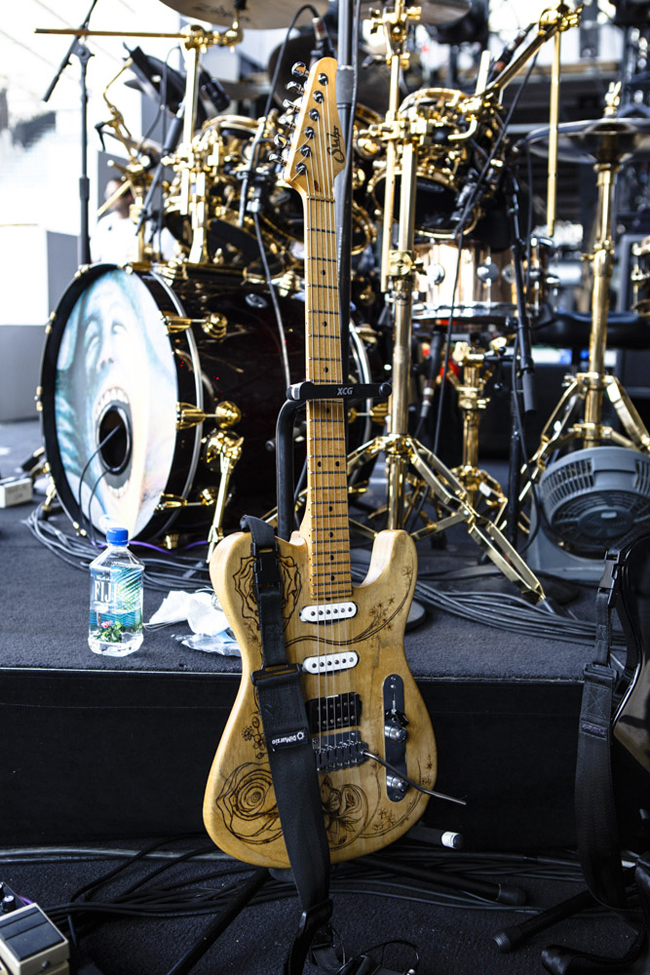
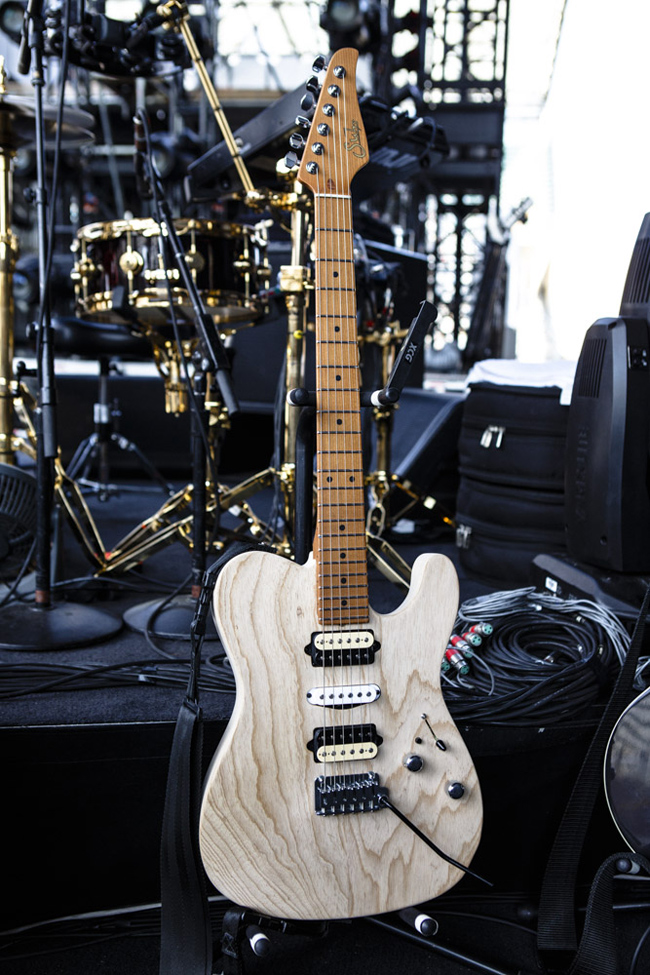
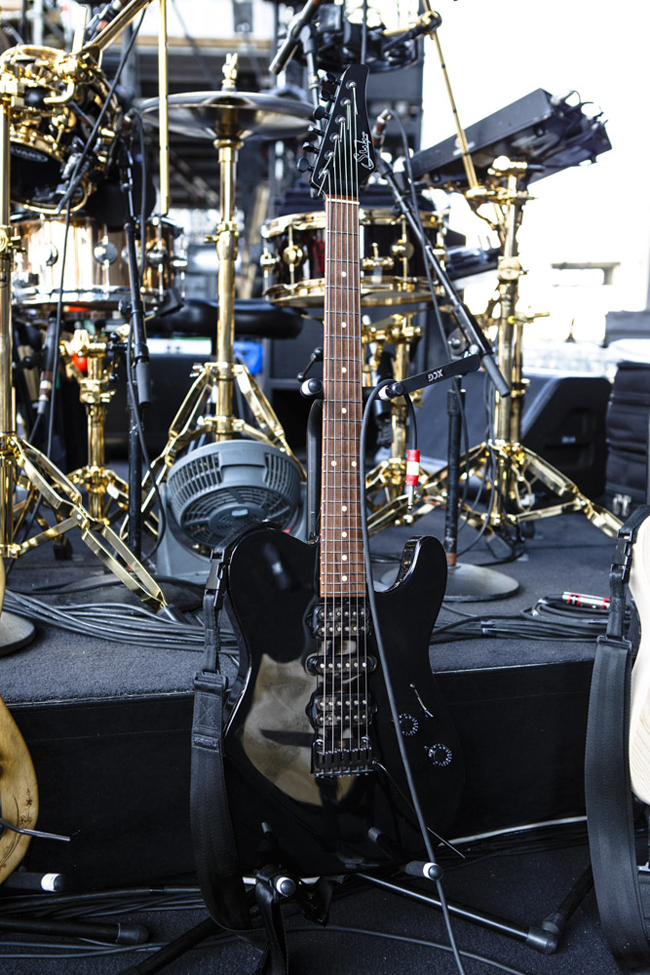
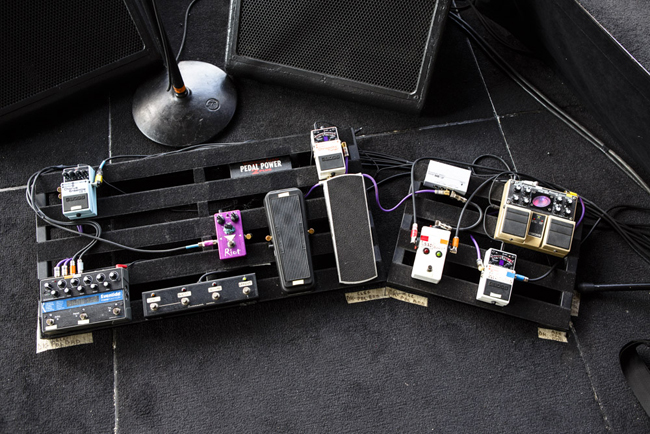

Brad is a Brooklyn-based writer, editor and video producer. He is the former content director of Revolver magazine and executive editor of Guitar World. His work has appeared in Vice, Guitar Aficionado, Inked and more. He’s also a die-hard Les Paul player who wishes he never sold his 1987 Marshall Silver Jubilee half stack.
“I suppose I felt that I deserved it for the amount of seriousness that I’d put into it. My head was huge!” “Clapton is God” graffiti made him a guitar legend when he was barely 20 – he says he was far from uncomfortable with the adulation at the time
“I was in a frenzy about it being trapped and burnt up. I knew I'd never be able to replace it”: After being pulled from the wreckage of a car crash, John Sykes ran back to his burning vehicle to save his beloved '76 Les Paul










